What Is CX? Understanding customer experience in business
CX is more than support—it’s the full customer journey. Learn what customer experience means, why it matters, and how to improve it across every touchpoint.
Customer experience (CX) is the sum of every interaction a person has with your brand—from ads to checkout to support.
And it matters. According to PwC, 73% of consumers say CX is the No. 1 factor in purchase decisions.
In this guide, we’ll break down what CX is, why it matters, and how to improve it across the customer journey.
What is CX (customer experience)?
Customer experience is the perception a customer forms based on every interaction with your brand, throughout the entire customer journey. That includes everything from your social ads to your website, your checkout flow to your support team.
Imagine you’re hunting for a new pair of sneakers online. You spot a pair you like the look of in the Google results and click through to the product page.
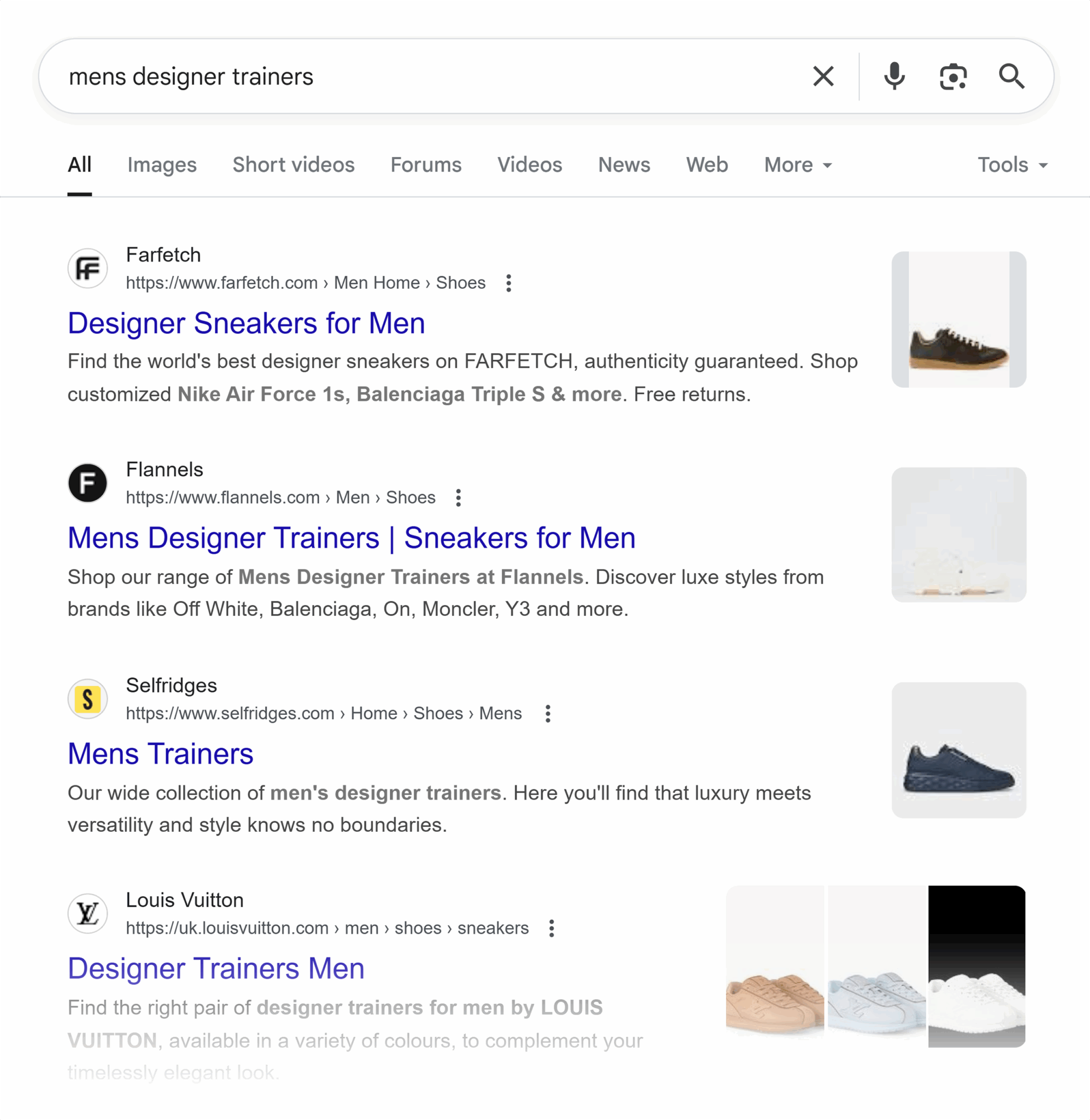
From there, the answers to questions like these determine how strong your customer experience really is:
- Are the product photos clear, high-quality, and realistic?
- Does the page include a size chart and similar recommendations?
- Is shipping free? Is the return policy simple and customer-friendly?
- Are there any hidden fees at checkout?
- Do you receive a confirmation email immediately and helpful shipping updates?
- Is the packaging clean and branded, or just functional?
- Can you easily return items, or are you stuck printing labels and waiting weeks for a refund?
Every single touchpoint shapes whether you’ll shop there again, from your first click to the “thanks for your purchase” email.
Capture enough of these moments, and you’ll build a loyal customer base that drives sustainable growth. But miss even one critical step in that journey and you could lose customers to competitors who’ve figured out how to nail the details that matter.
Why CX matters more than ever
CX directly impacts customer loyalty, revenue, and retention. Customers won’t just compare you to your competitors, but they’ll compare you to every great experience they’ve had. And ecommerce expectations are higher than ever. You need to make the decision-making easier.
Deliver a great customer experience, and people will buy from you again—and recommend you to others via word-of-mouth. Frustrate them even once, and you risk losing them for good. PwC research reveals that 32% of all customers would stop doing business with a brand they loved after just one bad experience.
It’s no surprise, then, that Deloitte research customer-centric organizations are 60% more profitable than companies that aren’t focused on the customer. Another Deloitte survey found that 88% of businesses now see CX as their primary competitive advantage.
When you focus relentlessly on CX, you can outperform competitors—even those with lower prices or better specs.
The key components of customer experience
What makes for a good customer experience? It’s more than a quality product or service, although that’s a big part of the equation.
It’s also:
- Proactive and friendly customer support
- Personalized communication that feels human
- Consistent interactions across every touchpoint
These factors all contribute to how your customers perceive your brand and whether they will buy from you again or look elsewhere next time.
Set metrics to handle each of these aspects and break down silos so that teams across marketing and your organization can brainstorm fixes driven by data. Then as you measure customer experience, you need to prioritize enhancements to digital experiences that will move the needle of conversions, and work your way back through customer feedback and ideas.
But before you get to work thinking of new fixes, you need to be clear on the major elements of CX. Below, we’ll walk through the four most important components of customer experience strategy and how to optimize each.
1. Customer journey mapping
Customer journey mapping reveals the key moments that make or break a customer relationship. It covers every touchpoint, from the moment they first hear about you to after they’ve made a purchase.
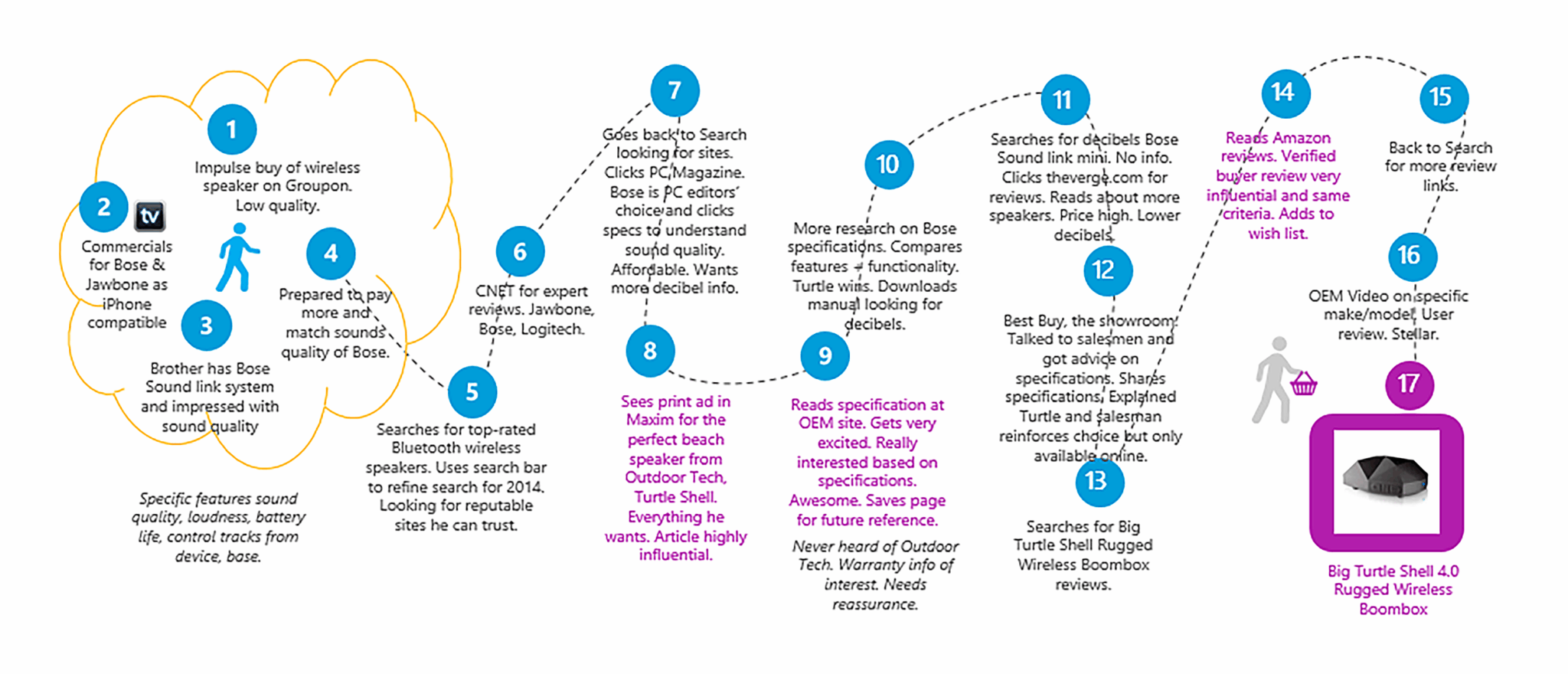
Think of it as creating a detailed roadmap of your customer’s experience that pinpoints exactly where they’re getting frustrated (aka their pain points), delighted, or confused along the way.
A customer journey map will help you identify the specific moments that either push customers toward a sale or send them running to your competitors. It maps both the actions customers take, like setting up an account, and the emotions they feel at each step.
Pro tip: Focus on fixing the friction points that are costing you sales first, then doubling down on the experiences that are driving results.
For example, you might discover that 40% of customers add items to their cart but then abandon their purchase just before completing it. Customer interviews reveal that this is because shipping fees and taxes only appear at the final checkout step. What felt like a $198 purchase suddenly becomes $250, and customers are left feeling tricked at the moment they’re ready to buy. The customers’ perceptions are costing you sales.
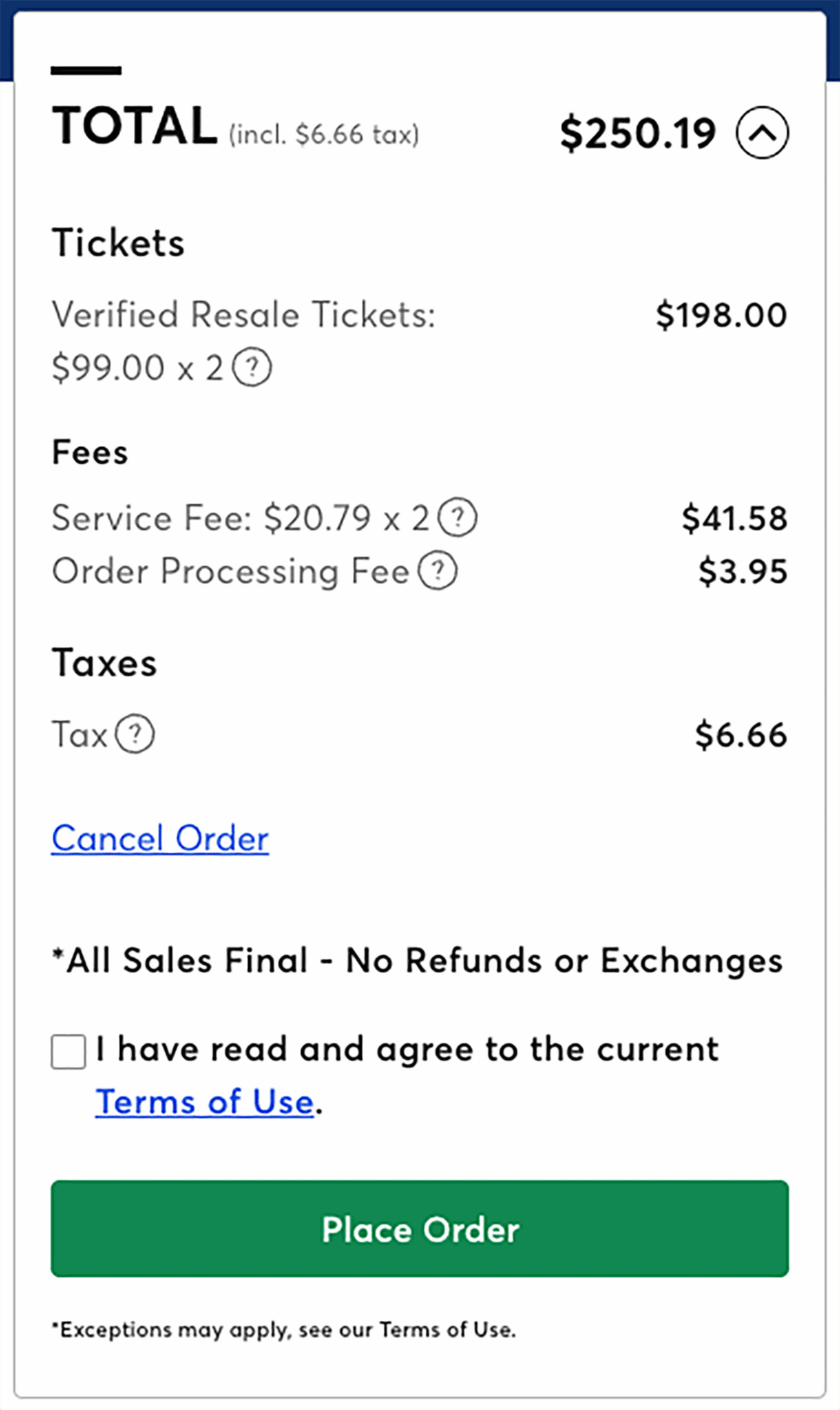
That’s a clear point of friction you’ll want to fix.
Conversely, your mapping might show that customers are excited to dive in post-purchase, but lose steam when they can’t get immediate value.
That’s the situation Bitly found themselves in. The solution? This onboarding email:
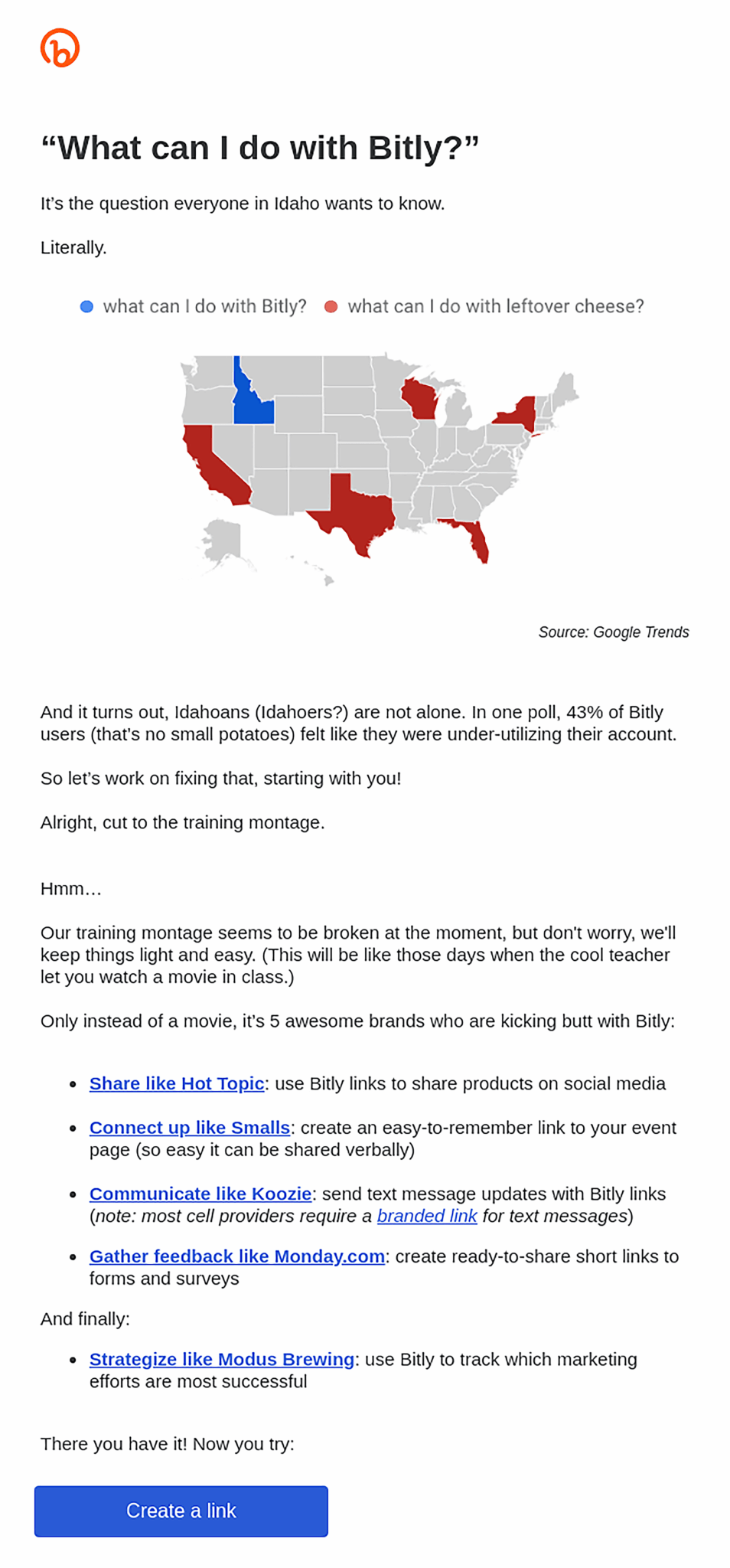
2. Personalization and relevance
The most effective personalization strategies use behavioral data to serve up exactly what customers want, when they want it.
McKinsey research shows that not only do 71% of consumers expect companies to deliver personalized interactions, but 76% also become frustrated when this expectation is not met.
That might mean sending abandoned cart emails that showcase the specific items someone was browsing:

Or using AI to recommend products based on the customer’s purchase history and browsing patterns:
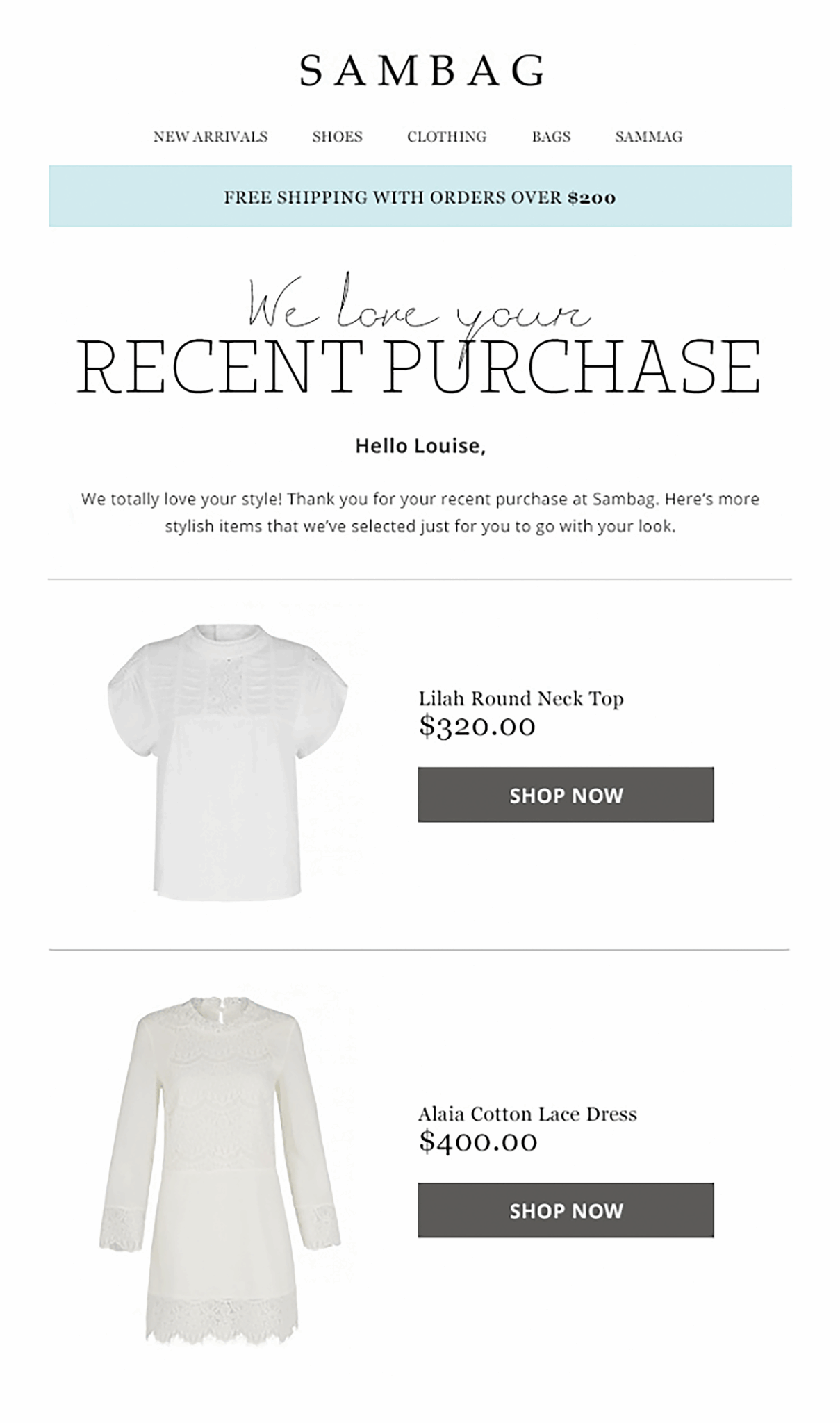
Or using dynamic website personalization to show returning visitors content that’s relevant to their interests:
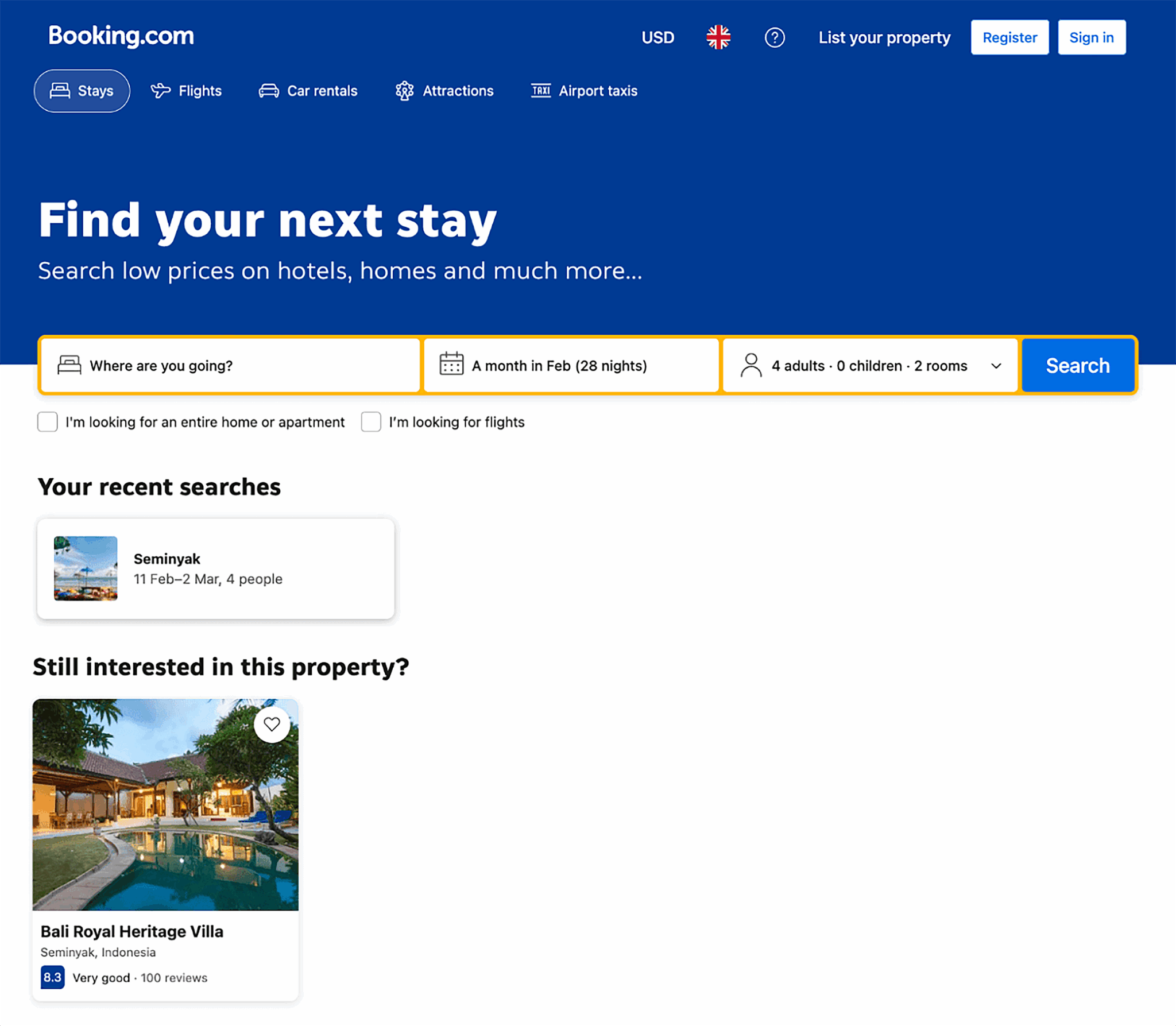
No one does personalization better than Chewy, the pet supplies retailer. Here’s an email they sent a Reddit user after they listed that their pet had passed away as the reason they want to return their order of dog food:
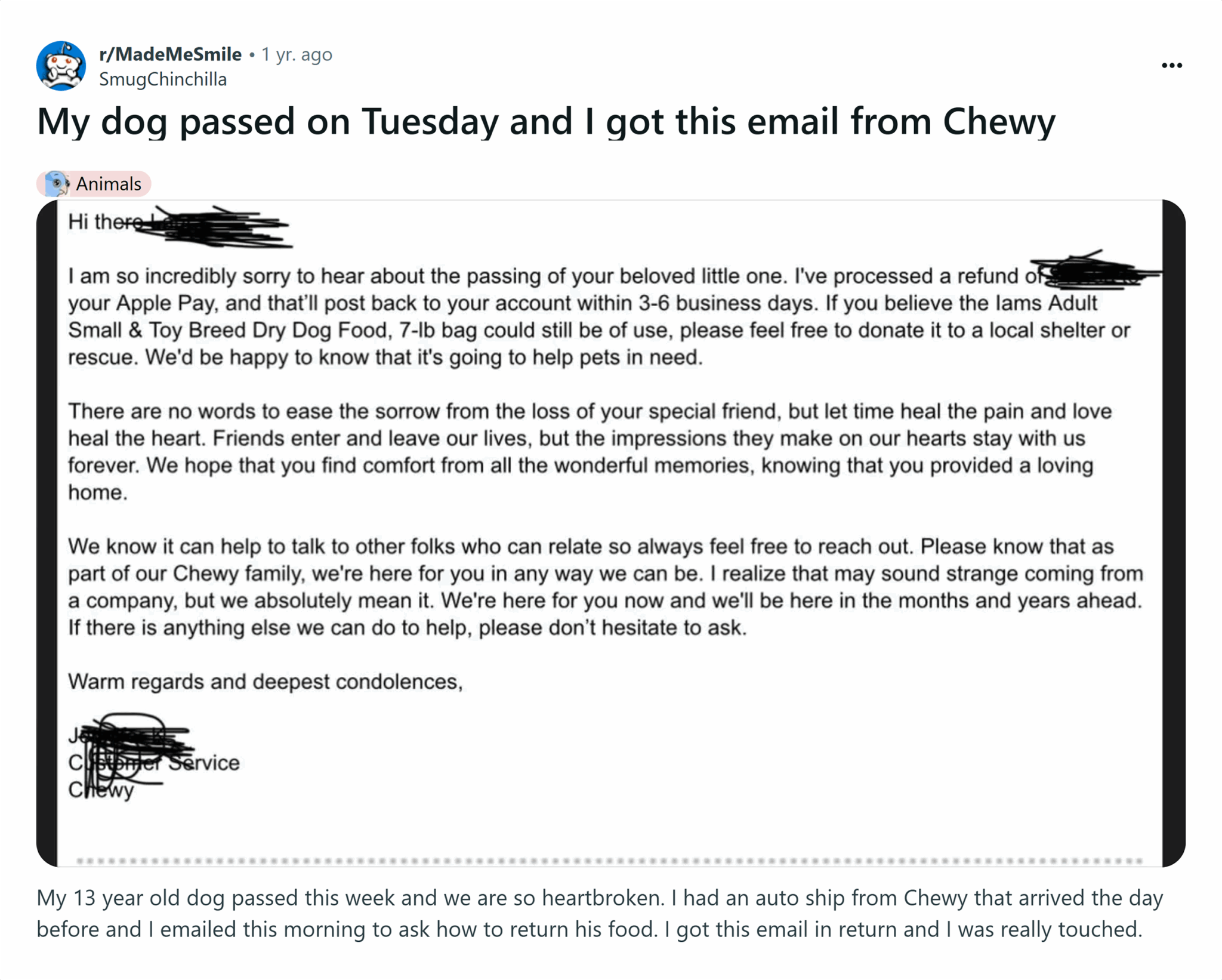
And here’s some other Chewy customers talking about how Chewy’s personalized CX made them feel:
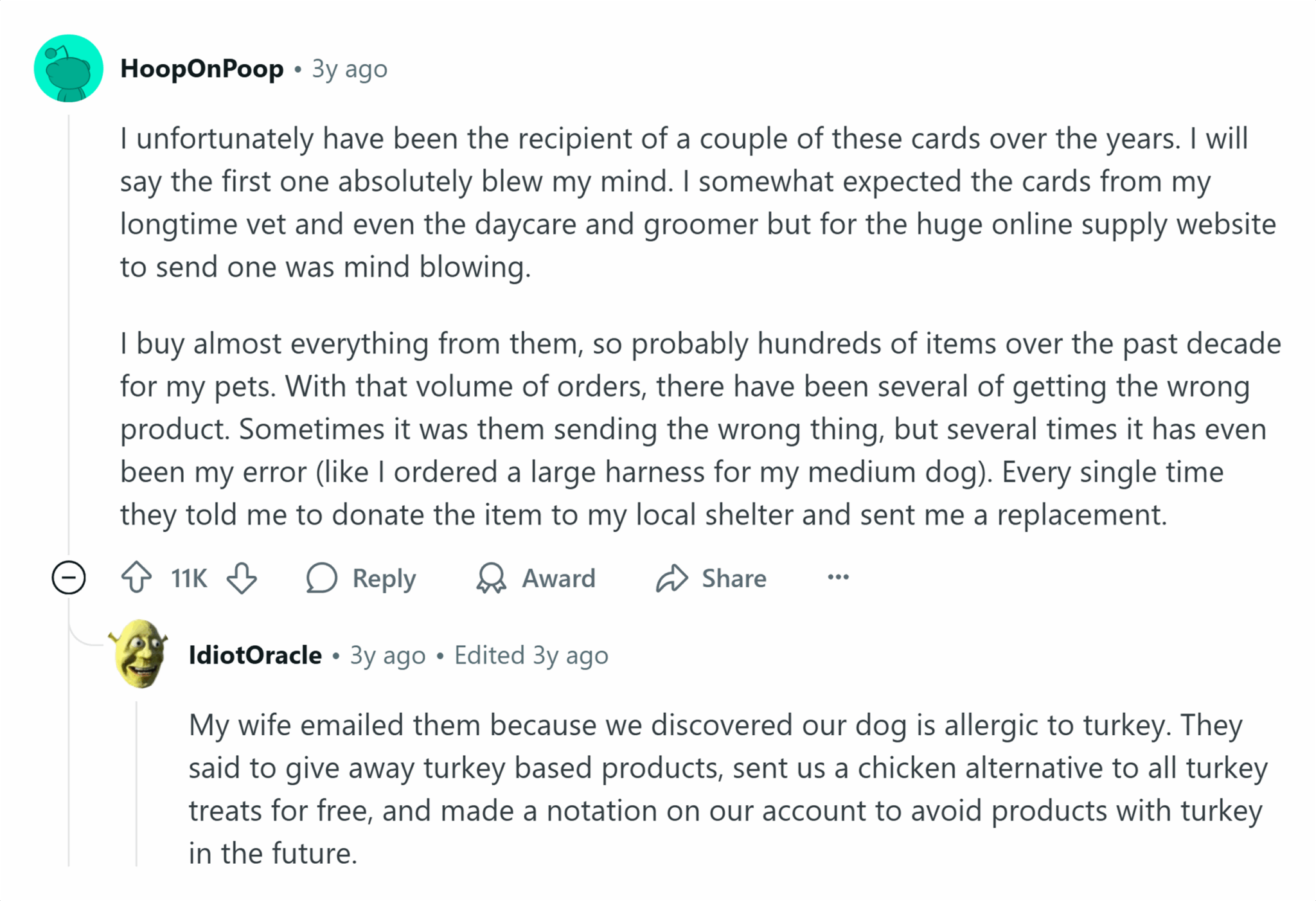
CX as remarkable as Chewy’s is what turns customers into brand advocates.
Of course, nobody wants to feel like they’re being stalked by an algorithm. The key is using customer data to create experiences that feel genuinely helpful rather than invasive. Get that balance right and personalization becomes a competitive advantage that’s tough for competitors to match. Set and monitor your KPIs to objectively measure whether you are achieving a better customer experience.
3. Omnichannel consistency
The companies that have mastered their CX make sure customers have the same experience with their brand at every touchpoint.
Note: Customers don’t think in terms of channels. They simply want to interact with your company in the most convenient way for them at that moment.
If each channel feels like a separate company, you’re creating CX confusion and losing trust with both existing and new customers. All customer interactions with your brand need to feel unified and cohesive.
The canned water company Liquid Death understands this. Its irreverent and darkly humorous brand voice shines through everything from its abandoned cart emails:
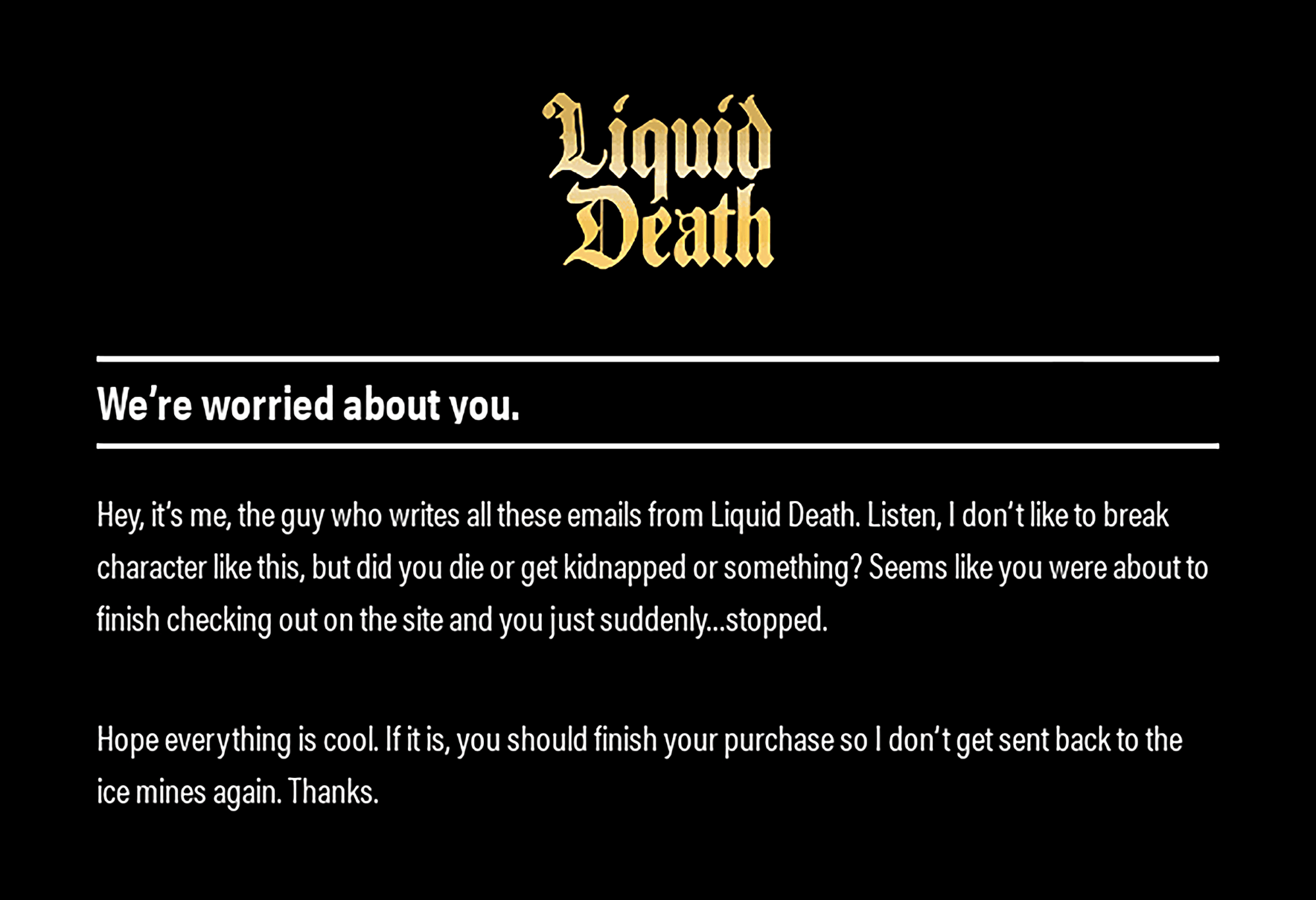
To the pop-ups on its website:
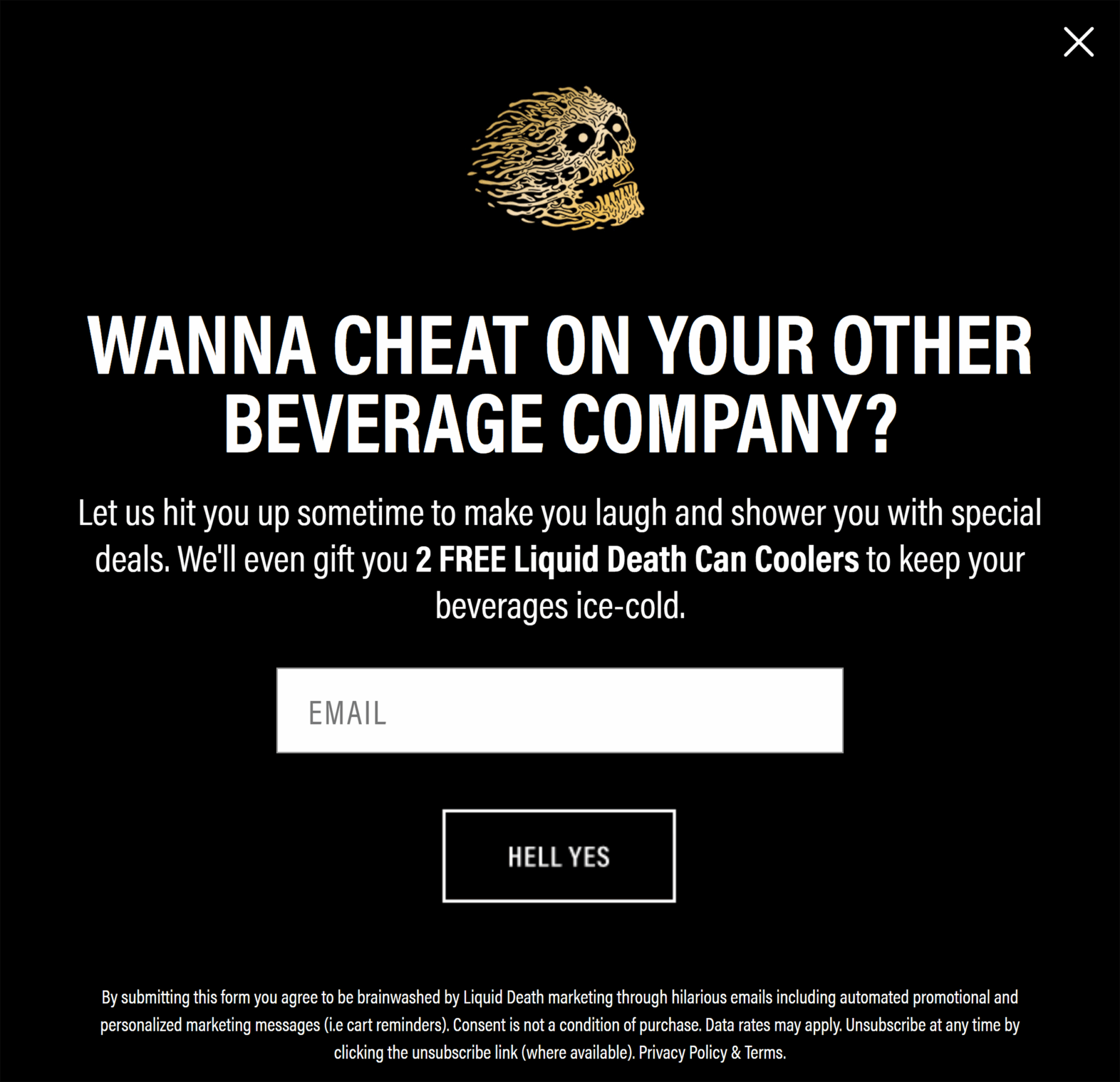
To its social media posts:

To the SMS messages it sends customers:
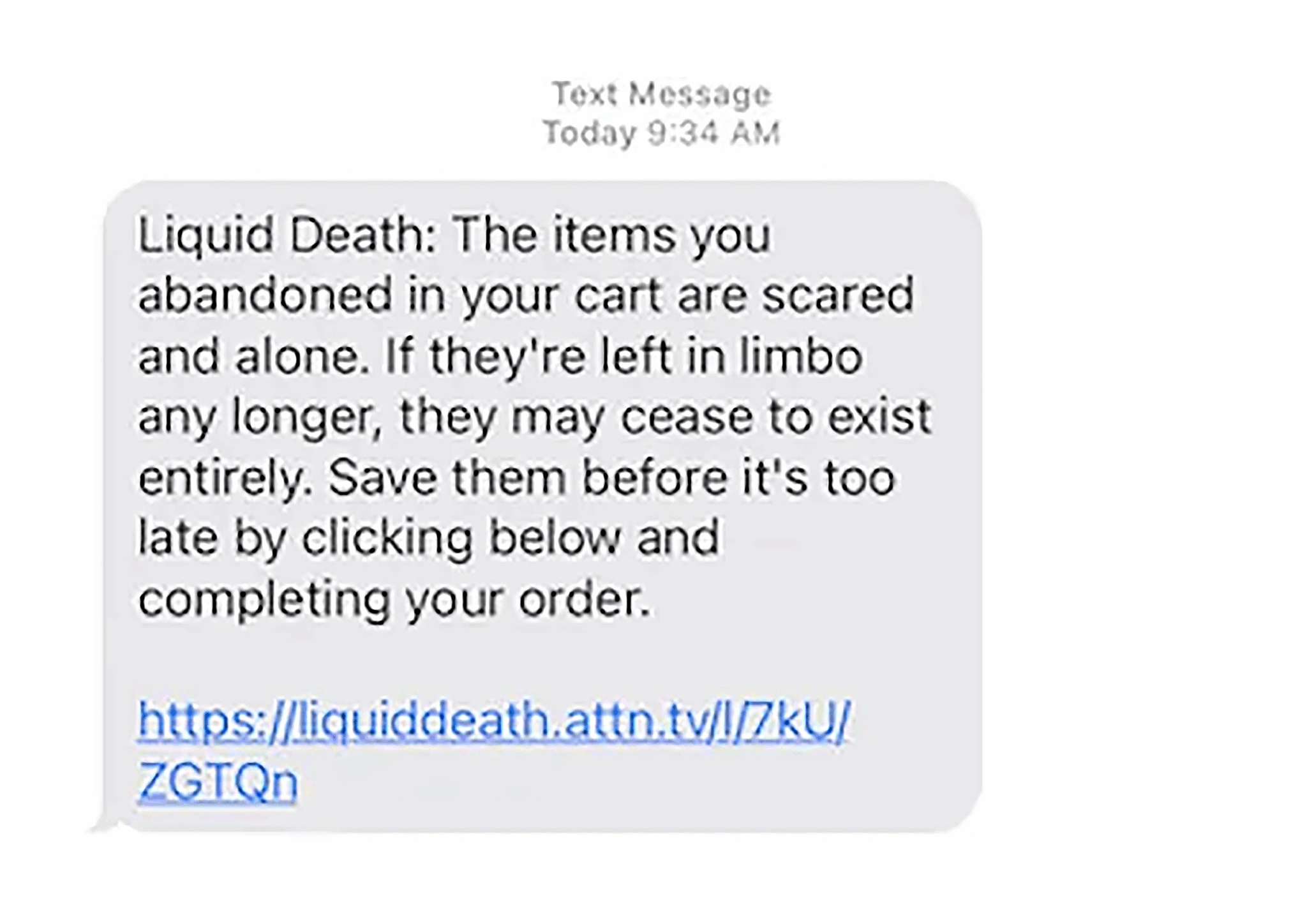
To its support emails:
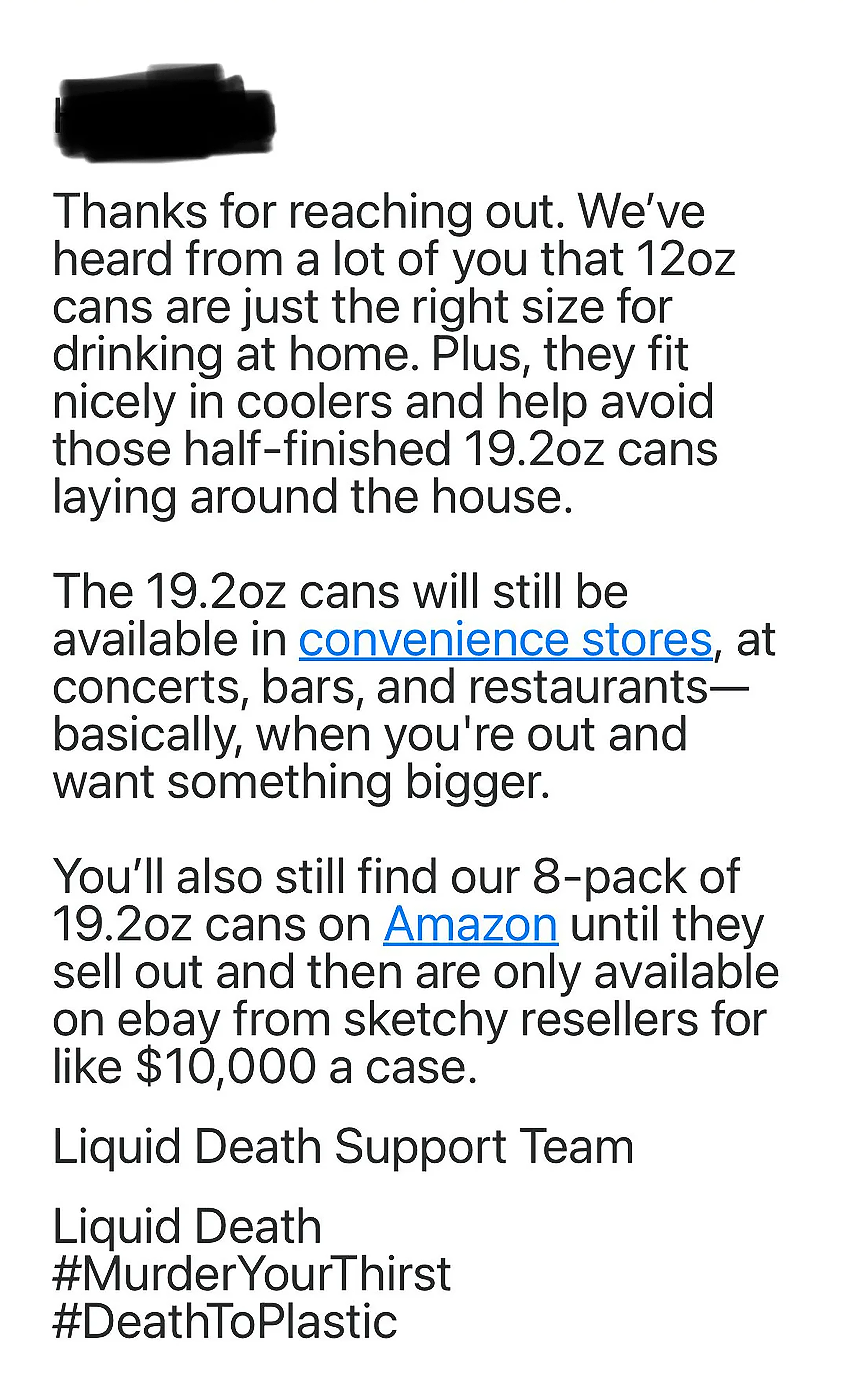
Even down to its site’s 404 page:
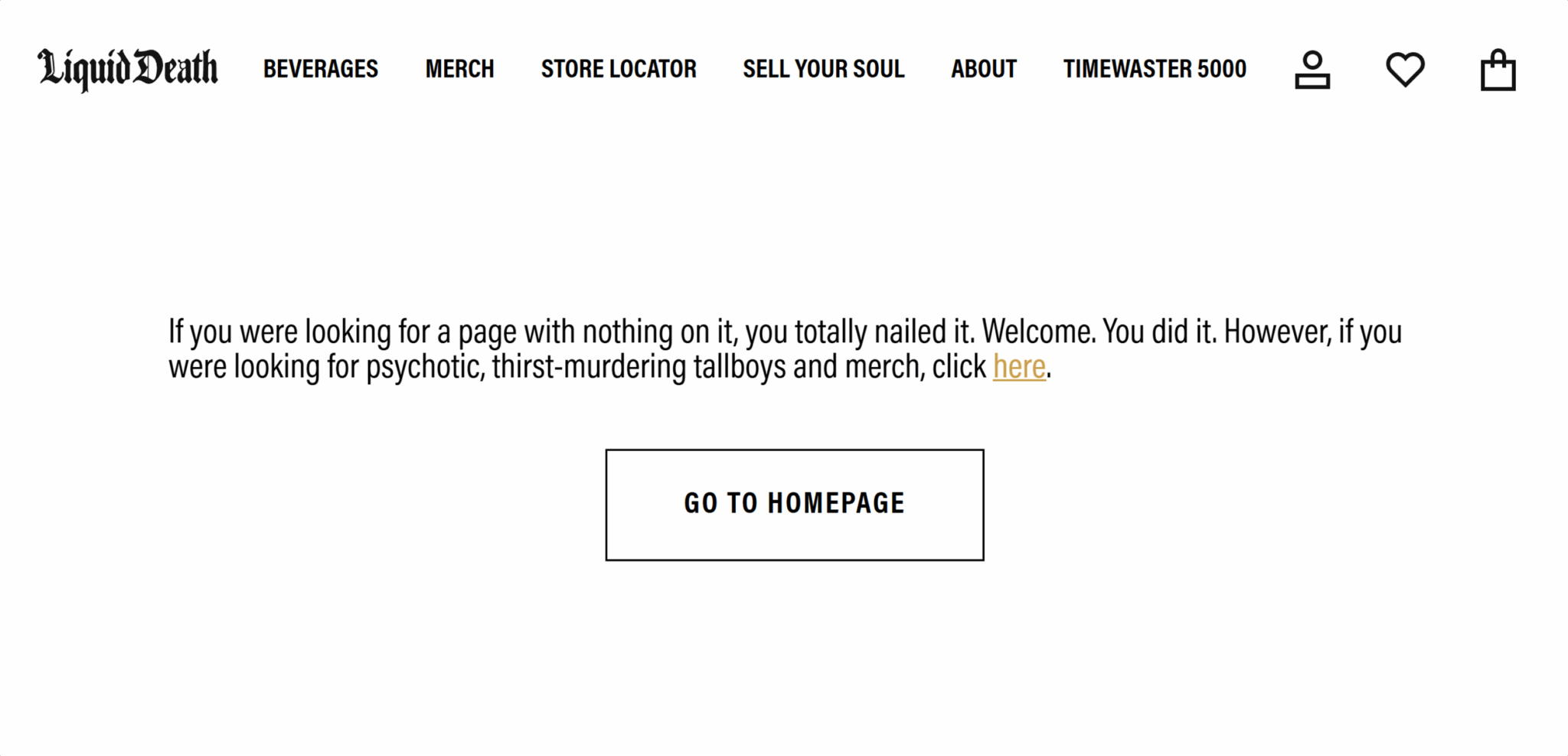
This isn’t just about brand voice though. A customer should be able to initiate a return process in your app, continue the conversation via email, and finalize it in-store without having to recount their story three times. That’s the kind of seamless experience that will keep customers coming back for more.
4. Responsiveness and support
Pro tip: You turn one-time buyers into lifelong customers through fast, proactive, and empathetic support, regardless of the channel your customer prefers.
Slow customer service loses customers.
According to research by Cavell, 44% of people believe that customer service has deteriorated over the past three years. Your business will have to be the exception to that rule if you want to deliver an exceptional customer experience.
Note: Research by PwC shows that nearly 80% of American consumers say speed, convenience, knowledgeable help, and friendly service are the most important elements of a positive customer experience.
Most customers don’t care how their problem is solved; they just want it fixed quickly. That’s why the most successful companies are developing support systems that provide people with multiple ways to get help, including multiple options for self-service. Each channel handles what it does best, rather than forcing everyone through a generic experience.
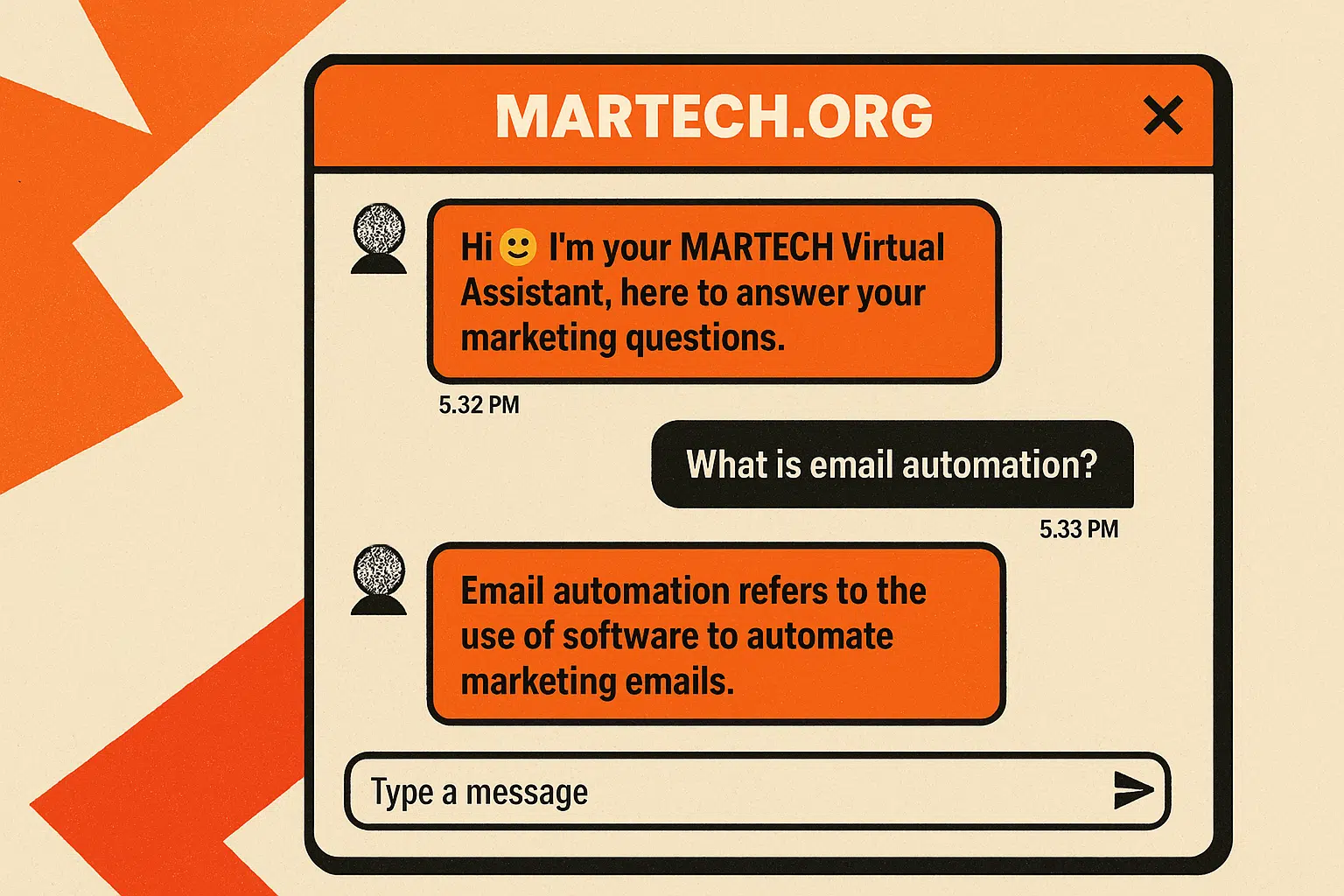
Chatbots are ideal for handling repetitive questions that consume your human agents’ time. They can instantly tell customers about store hours, shipping status, or return policies without anyone having to wait in a queue.
Note: Research by Zendesk revealed that 51% of consumers prefer interacting with bots over humans when they require immediate service.
Live agents can then step in when problems require actual human judgment. Situations like:
- Processing a complex return
- Troubleshooting technical issues
- Dealing with upset customers who need someone to genuinely listen
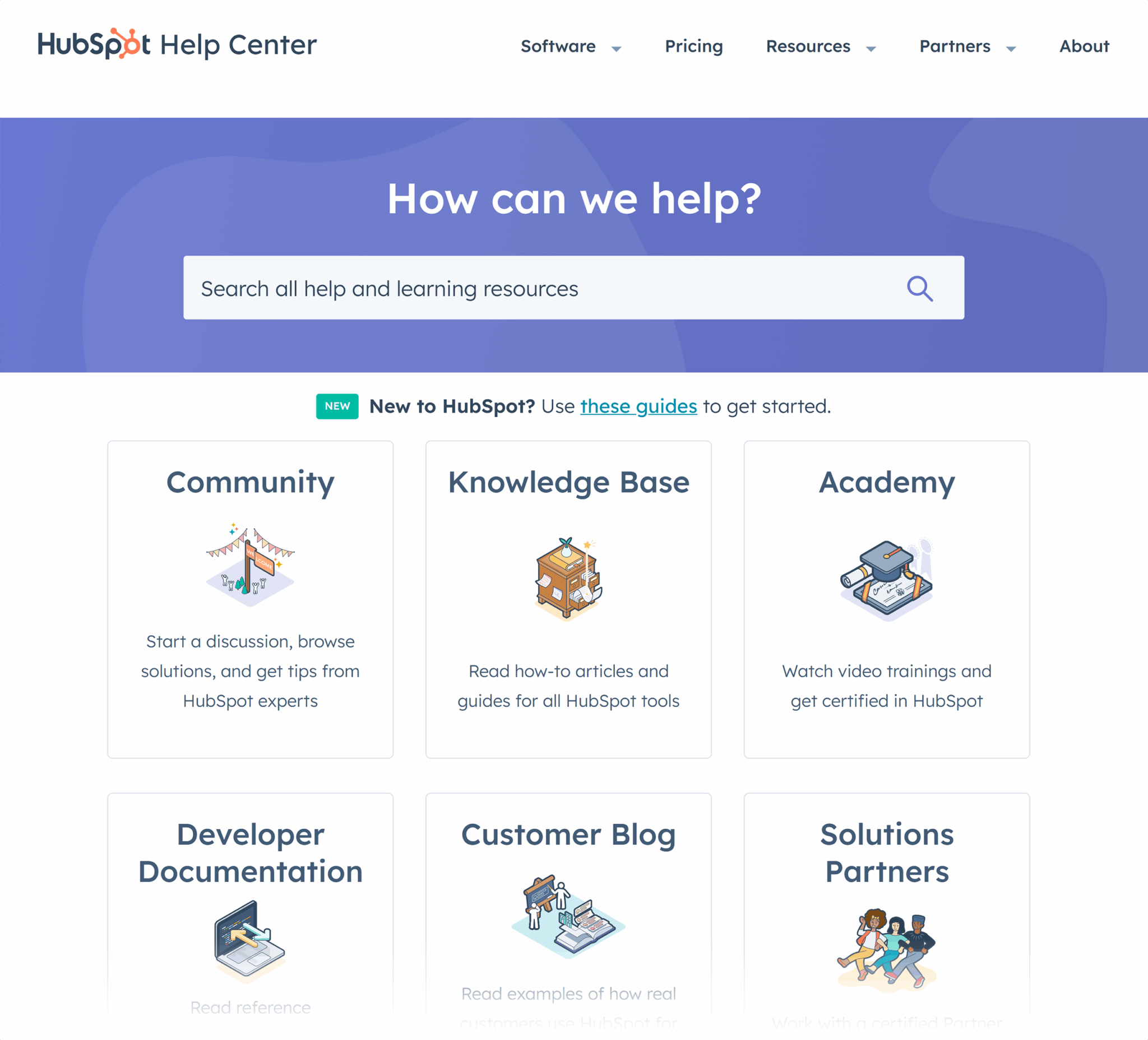
Help centers work best for customers who prefer to solve things themselves. Instead of generic FAQs that nobody reads, create searchable knowledge bases with:
- Step-by-step guides
- Video tutorials
- Real solutions to common problems
The goal is to help people find answers at 2 a.m. when your support team is offline.
Last but not least, proactive customer support is one of the most effective things you can do for your CX. According to research by MyCustomer, a massive 73% of customers who are contacted proactively report a positive experience that changes their perception of the brand for the better.
So, send a heads-up email about a delivery issue before customers start wondering where their order is, and you can turn a potential complaint (and bad customer experience) into a moment that builds trust and brand loyalty.

How to measure CX
How do you measure something that encapsulates every interaction a customer has with your brand? You can’t sum things up with a single metric. Instead, you have to keep a close eye on a range of qualitative and quantitative data points to get the full picture.
They include:
CX performance metrics
Pro tip: The more data sources you pull from, the clearer the picture of how well your CX strategy is performing will be.
Net Promoter Score (NPS) gives you the answer to one simple question: “How likely are you to recommend us to a friend?” This provides a clear picture of how many customers are genuinely satisfied with your brand and how many are at risk of churning.
The Customer Satisfaction Score (CSAT) measures the level of satisfaction customers experience after a specific interaction or experience, such as completing a purchase or conversing with a chatbot. This makes it perfect for identifying which touchpoints are working and which are leaving customers feeling frustrated.
Customer Effort Score (CES) reveals how hard customers have to work to get things done with your company. High-effort experiences kill loyalty faster than almost anything else, so this metric shows you exactly where to focus your improvement efforts.
Customer Lifetime Value (CLTV), churn rate, and retention curves tell the financial story of your customer relationships. These metrics reveal whether your CX investments are actually driving business results or just making you feel good about survey scores.
Time to first value (TTFV) is the period from when a customer signs up for or buys your product or service to when they feel like they’re getting a return on their investment. A long TTFV is likely to result in high customer churn.
Support response time and resolution satisfaction measure how effectively you solve problems when things go wrong. Fast responses matter, but customers care more about getting their issues fixed than getting a quick “we’re looking into it” message.
What Happens When Buyers Ask AI About Your Brand?
✓ Monitor what AI says about your brand 24/7
✓ Get alerts when sentiment drops or info is outdated
✓ Ensure consistent messaging across all AI platforms
Real-time AI monitoring.
Voice of Customer (VoC) feedback loops
Pro tip: Qualitative data, such as customer interviews, adds important nuance to quantitative data, like NPS and CSAT results.
Surveys, reviews, and in-product feedback give you quantitative data on how successfully you’re delivering an excellent customer experience. But timing is everything here: ask for feedback when experiences are fresh in customers’ minds, not weeks later when they’ve forgotten what happened.
Social listening and sentiment analysis capture the conversations customers are having about your brand online. This unfiltered feedback often reveals problems and opportunities that formal surveys miss entirely.
CX vs. UX vs. Customer service: How they connect
While customer experience (CX), user experience (UX), and customer service are connected, they’re all separate disciplines. Understanding the difference between them all is crucial if you want to build experiences that delight your customers.

- Customer experience (CX) is the entire relationship someone has with your brand, from the first time they hear about you to years after they’ve made a purchase.
- User experience (UX) focuses specifically on how people interact with your product or digital interfaces, like whether your app is intuitive or your checkout process is smooth.
- Customer service handles support interactions when things go wrong or customers need help, whether that involves reactive problem-solving or proactive outreach.
Frictionless UX and responsive service both contribute to remarkable CX. However, all three are distinct disciplines, each headed by a separate team. Of course, the closer your CX team works with your UX and customer service departments, the better your customer experience will be.
Ready to start providing remarkable customer experiences?
Excellent customer experience is your unfair advantage—if you know where to focus. Start by identifying what’s holding your customers back.
Pinpoint friction in your customer journey, fix the drop-off points, and turn one-time buyers into loyal advocates.
Want help optimizing customer journeys? Start here: 5 simple ways to improve the customer experience.
New on MarTech